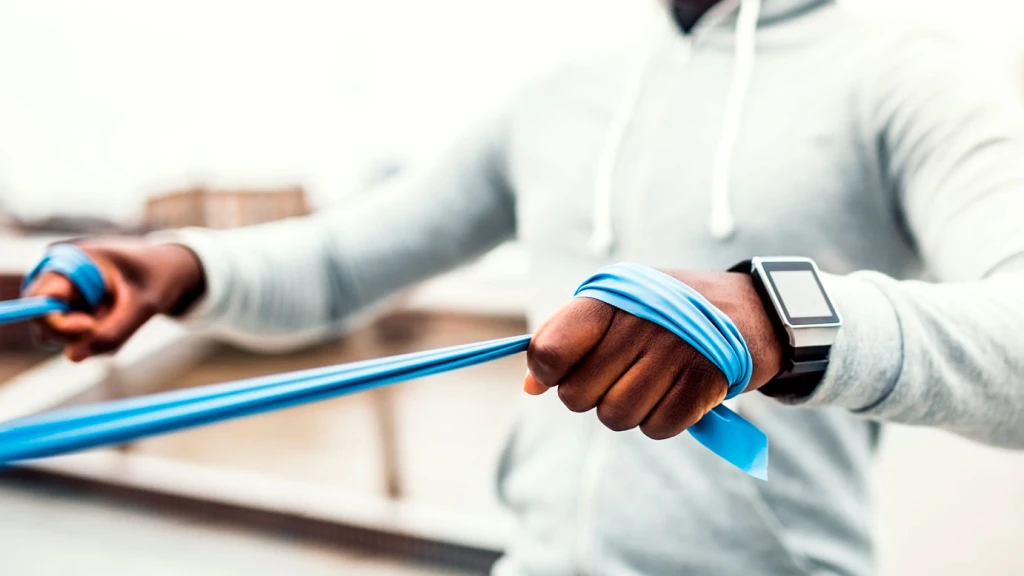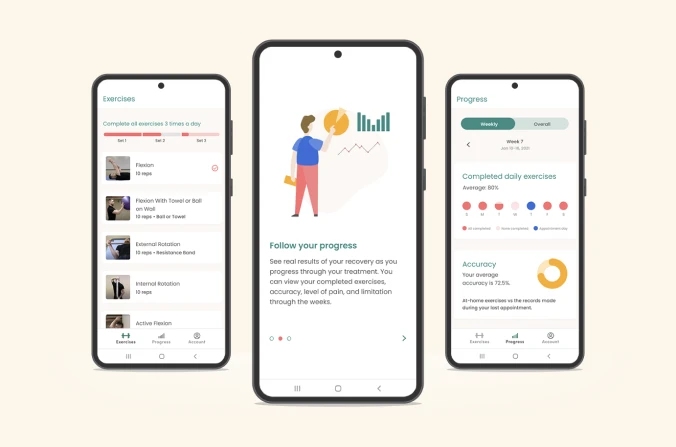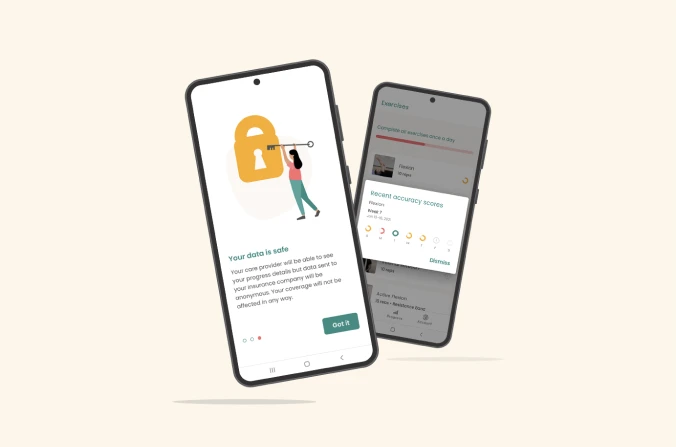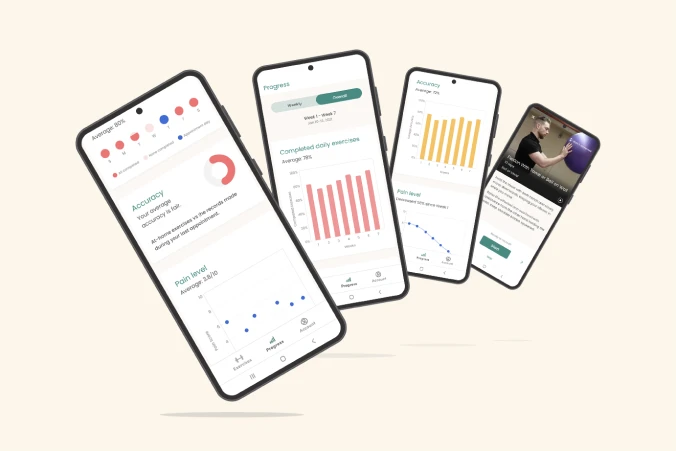Case Study: Halterix
What If Your Smartwatch Could Help Improve Your Approach To Physical Therapy?

While conducting his PhD research, Halterix founder Dr. David Burns discovered a breakthrough in motion recognition technology that recognized and evaluated human motion using the signals collected from sensors in a smartwatch.
As an orthopedic surgeon, Dr. Burns realized so many surgeries were being done that could have been avoided with more effective physical therapy (PT). But what do healthcare providers know about how much PT people actually do on their own – or how properly they do it?
Up until now, gaining these types of measurements typically required at least three wearable sensors. But by using a powerful AI engine and data capture technology, we helped Halterix begin development of a first-of-its-kind app that measures, evaluates, and shares real-time performance using just a smartwatch.

Flexing our research muscles
Excited by the idea of designing a motion data smartwatch solution, we visited various PT sites to observe how people actually function, ask them questions, and make sense of how this app could work best for them. We realized we’d have to address the following key items in order to fully engage users in their physical therapy journey and help them
recover faster:
Discover the problems being solved
Before getting started, we wanted to make sure that we identified actual problems while understanding how they stood in the way of the users.
Determine the most appropriate and effective approach for the end user
With an understanding of the problems to solve and why, we explored and tested multiple possible solutions to identify which ones had the greatest positive affect for our users.
Build an integrated technology solution
Build an integrated technology solution connecting a smartwatch app, a patient app, a practitioner app and a server with the existing AI

What about data privacy?
At MindSea, we stay on top of data privacy and security guidelines. It’s a formal step of our internal design process. For this project, we thought, not so formally, “Would people be creeped out using this app?”
A smartwatch is telling you if you’re doing an exercise the right or wrong way and it’s sharing that data with a practitioner. Would that bother people that their potential poor performance was being seen by their doctor or physical therapist? So, we asked around. And research showed the answer was “No.” It’d be different if this data was shared with an insurance company, but they didn’t mind if it was being used for the benefit and progress of their own healing.
Presenting actionable data
The interesting challenge as we approached design was around complex functionality. How do we best present user scores and make the data actionable, so users stay engaged?
Original beta testing done by Halterix had revealed that there simply wasn’t enough information to be actionable. An overall score didn’t do much for users, but telling them if an exercise was good, not so good, or great and why, would.
So during our design phase, we explored creative ways to facilitate communication of the motion data being shared between a smartwatch, patient, and practitioner.

Getting it right the first time
Our blueprint and collaborative research approach enabled us to create a mockup flow that largely ended up being what Halterix used for their prototype. The App Blueprint is a comprehensive and collaborative process where we better understand our clients’ user base and product vision. This is where we map out everything, from wireframes and user flows, to mockups and designs.
Moving Digital Health Podcast with special guest Dr. David Burns of Halterix
In the fourth episode of Moving Digital Health, the new podcast from MindSea, CEO Reuben Hall talks with Dr. David Burns of Halterix. Dr. Burns walks us through the make-or-break role that patient adherence plays in the success of a prescribed physical therapy, and how technology can help.
Multi-partner collaboration
After listening to the needs and wants of patients, we were able to suggest new design tweaks to the larger research team, ultimately aligning on an approach that helped create an enhanced immersive experience for users. The next step in the development process involves further collaboration with Sunnybrook Research Institute, who will be monitoring the clinical research of user engagement.
Not only has Halterix tested the beta prototype in multiple clinics across Canada, but we were also able to help prove their promise to investors that they could execute on a complex plan and release an innovative and professional looking digital health tool.

“MindSea implemented design solutions in places where we would never have thought to put them. It’s an incredibly intuitive experience. What we’ve got now is something that we’re really proud of.“
–Russ Patterson, CEO, Halterix

Ready to build an app that improves lives?
Find out how MindSea can help you reach your goals.